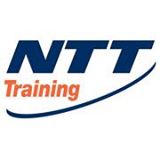HOME > Seminars in ILLINOIS > Chicago > NFPA 72: National Fire Alarm & Signaling Code
|
||||||||||||||||||
Bring this seminar on-site to your facility for groups of 10 or more. |
Participants of this NFPA 72 training will learn the fundamentals of fire alarm systems, fire alarm equipment for dwelling units, initiating devices, emergency communication systems (including mass notification), and more.
Course Description
The NFPA 72 – National Fire Alarm Code was updated in 2016.
Being up-to-date with basics of the National Fire Alarm and Signaling Code® (NFPA 72) will help improve your fire alarm and signaling system's reliability. Participants of this NFPA 72 training will learn the fundamentals of fire alarm systems, fire alarm equipment for dwelling units, initiating devices, emergency communication systems (including mass notification), and more.
Workers gain knowledge to ensure that your fire alarm system is working properly to achieve maximum reliability, safety and compliance.
This seminar is frequently paired with the NICET I & II test-prep course for people seeking CEUs (Continuing Education Units) or to take the NICET exams.
At the end of this seminar, students will be able to:
- Determine which codes are applicable to fire detection and alarm systems.
- Understand how building occupancy requirements affect your fire alarm system.
- Decide where you should and should not use detectors, and the installation requirements.
- Avoid the most common errors.
WHO SHOULD TAKE THIS SEMINAR
The NFPA 72 – National Fire Alarm Code was updated in 2016. Any person who maintains, or is responsible for, fire alarm systems needs to make sure they understand how to stay in compliance. Such people will benefit from this practical hands-on fire alarm training.
What You Will Learn
The National Fire Alarm & Signaling Code seminar includes classroom environment training, in addition to practical hands-on labs. If you bring us to Your House (i.e. if you bring us on-site) we can tailor the content to fit your needs.
Participants learn to identify various components of a typical fire alarm system, recognize differences in requirements between NFPA 72, ADA (ADAAG) and UFAS documents; and will be able to lay out a fire alarm system using basic components (i.e., manual alarm stations, alarm bells, detectors, etc.).
Topics covered during training include:
- What codes are applicable to fire detection and alarm systems
- How building occupancy requirements affect your fire alarm system
- Where you should and should not use detectors
- Installation requirements
- How to avoid the most common errors
- Fundamentals of fire alarm systems
- Fire warning equipment for dwelling units
- Protected premises fire alarm systems
- Supervising station fire alarm systems
- Initiating devices
- Notification appliances for fire alarm systems
- Inspection, testing, and maintenance
- The relevancy of the Fire Alarm Code® and Signaling Code
Hands-On Lab Exercises
- Required battery supply calculations
- Battery charger sizing and recharge periods
- Voltage-drop calculations
- Sizing strobes in various room sizes
- Computing air changes for high air-movement areas
- Supervisory and alarm currents calculations
- Determining proper wire sizes for delivery of sufficient power to notification appliances
- Interpretation of NFPA 101 and 72
- Designing the layout of various case studies
- Wiring and testing systems, plus observing repetitive deficiencies
Workshop Agenda
FUNDAMENTALS OF FIRE ALARM SYSTEMS
- Terminology and definitions
- Phases of a fire hazard
- Primary and secondary power supply requirements
- Determining proper sizes for batteries and battery chargers
- System operation and compatible components
- Required documentation
FIRE WARNING EQUIPMENT FOR DWELLING UNITS
- Minimum and suggested detection requirements
- Use of household vs. protected premises fire warning equipment
PROTECTED PREMISES FIRE ALARM SYSTEMS
- Circuit designations and repetitive deficiencies
- IDC, SLC, and NAC circuit installation requirements and pitfalls
- Component location requirements
- Coordination with other related systems
SUPERVISING STATION FIRE ALARM SYSTEMS
- Available signal transmission methods
- Classification of protective signaling systems
INITIATING DEVICES
- Principles of operation of the various automatic detectors
- Choosing the right detector for the right location
- Installation points and repetitive deficiencies
- Heat detector selection
- Requirements of concealed detectors
- Environmental factors in smoke detection
- Smoke detection for air duct systems
- Detectors in high air movement areas
NOTIFICATION APPLIANCES FOR FIRE ALARM SYSTEMS
- NFPA and ADA requirements for notification appliances
- Notification appliance location with audible and visual requirements
- Determining proper wire sizes
- Repetitive deficiencies
INSPECTION, TESTING AND MAINTENANCE
- Who is responsible for testing
- Required documentation and certification
- Proper testing techniques of initiating devices
- Required testing of notification appliances
- Testing of system wiring
THE RELEVANCY OF THE FIRE ALARM CODE® AND SIGNALING CODE
- Such as NFPA 13, NFPA 20, NFPA 70 and NFPA 101
HANDS-ON LAB EXERCISES
- Required battery supply calculations
- Battery charger sizing and recharge periods
- Voltage-drop calculations
- Sizing strobes in various room sizes
- Computing air changes for high air-movement areas
- Supervisory and alarm currents calculations
- Determining proper wire sizes for delivery of sufficient power to notification appliances
- Interpretation of NFPA 101 and 72
- Designing the layout of various case studies
- Wiring and testing systems, plus observing repetitive deficiencies\
- "As-built" point-to-point wiring schematics
- Device compatibility document
- Initiating device circuit
- Notification appliance circuit
- Signaling line circuit
- Smoke detector sensitivity test
- Visual and functional tests
|
More Seminar Information | ||||||||||
| ||||||||||
 Search similar training
Search similar training Email this page
Email this page Print this document
Print this document
|
Frequently Asked Payment Options Register Availability Other Information |

 NFPA 72: National Fire Alarm & Signaling Code Seminar
NFPA 72: National Fire Alarm & Signaling Code Seminar
 On-Site Training
On-Site Training